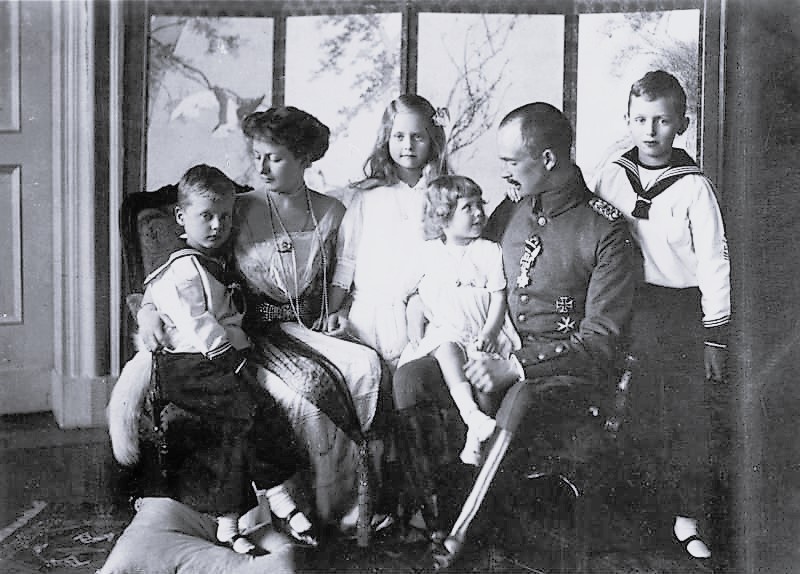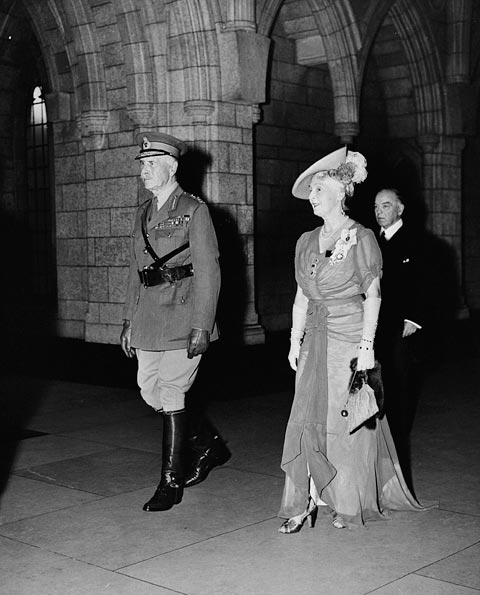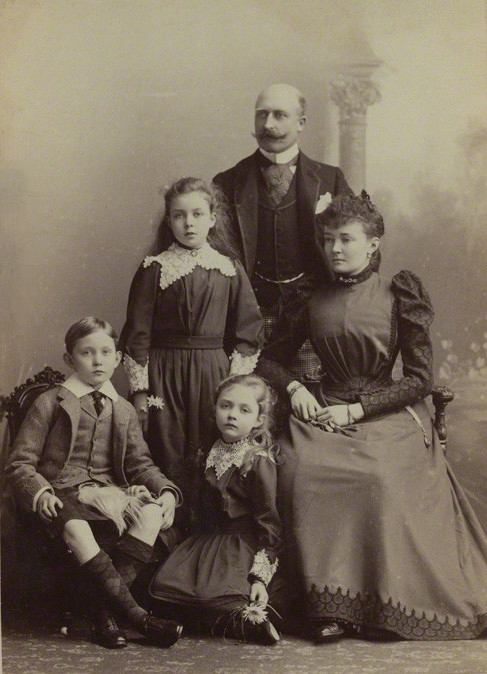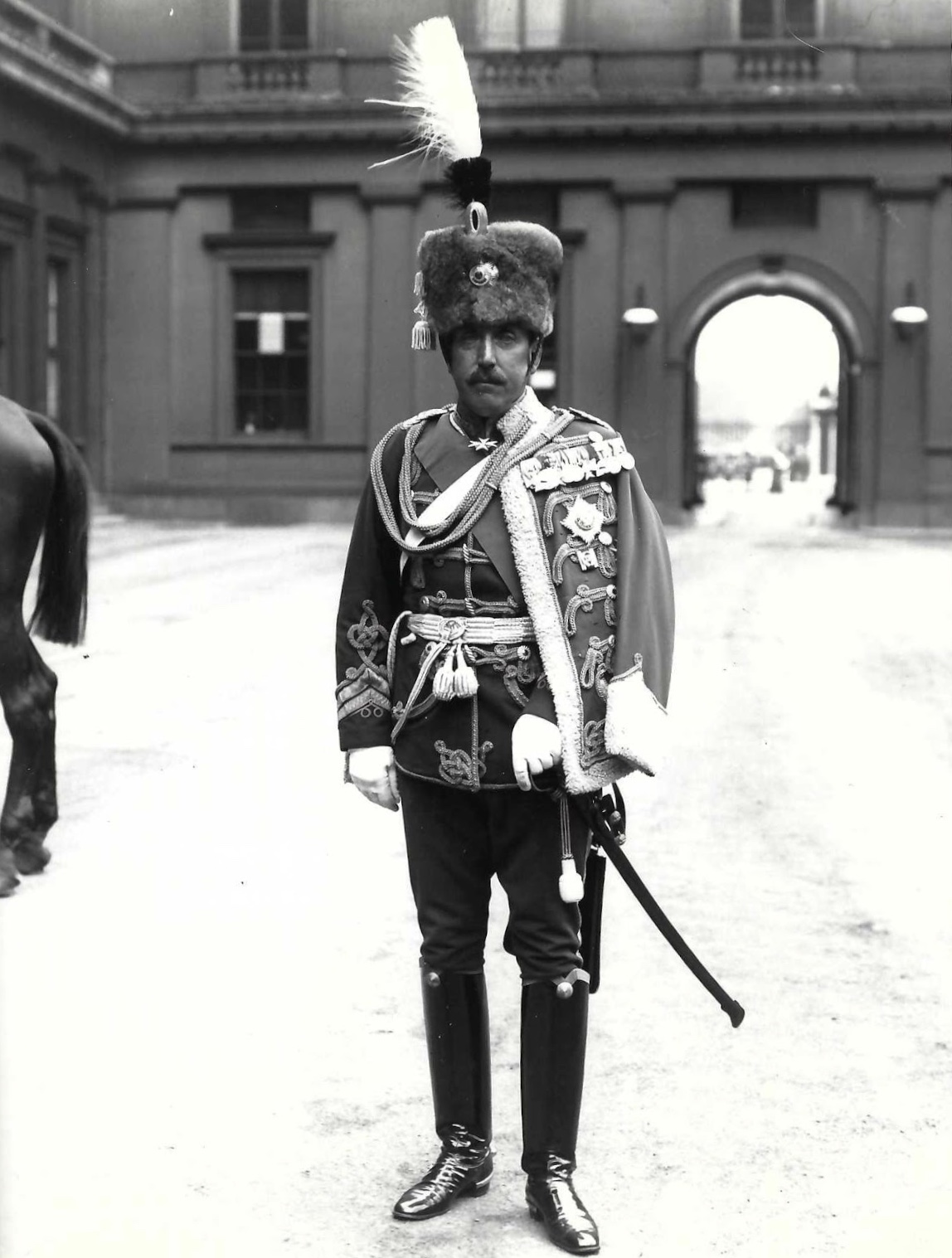by Susan Flantzer © Unofficial Royalty 2015
Saxe-Coburg-Saalfeld/Saxe-Coburg and Gotha: In 1675, Ernst I, Duke of Saxe-Gotha-Altenburg died. Initially, his seven sons collectively governed the Duchy of Saxe-Gotha-Altenburg, as set out in their father’s will. In 1680, the seven brothers concluded a treaty of separation, with each brother getting a portion of the Duchy of Saxe-Gotha Altenburg and becoming a Duke. One of the seven new duchies was the Duchy of Saxe-Saalfeld and Johann Ernst, one of the seven sons of Ernst I, Duke of Saxe-Gotha-Altenburg became the first Duke of Saxe-Saalfeld. When two of his brothers died without male heirs, Johann Ernst took possession of Coburg (in 1699) and Römhild (in 1714). In 1699, Johann Ernst’s title changed to Duke of Saxe-Coburg-Saalfeld.
In 1825, 145 years after the initial split, another line became extinct and there was another split between three surviving duchies. Ernst III, Duke of Saxe-Coburg-Saalfeld became Ernst I, Duke of Saxe-Coburg and Gotha. For more information on the switch, see Saxe-Coburg-Saalfeld/Saxe-Coburg and Gotha Index.
On November 9, 1918, after the German Empire lost World War I, the Workers’ and Soldiers Council of Gotha, deposed the last Duke of Saxe-Coburg and Gotha, Charles Edward, a grandson of Queen Victoria. Five days later, he signed a declaration relinquishing his rights to the throne. The territory that encompassed the Duchy of Saxe-Coburg and Gotha is now in the German states of Bavaria and Thuringia.
********************

Viktoria Adelheid of Schleswig-Holstein-Sonderburg-Glücksburg, Duchess of Saxe-Coburg and Gotha; Credit – Wikipedia
Princess Viktoria Adelheid of Schleswig-Holstein-Sonderburg-Glücksburg (Viktoria Adelheid Helene Luise Marie Friederike) was born on December 31, 1885, at Grünholz Manor (link in German) in Thumby, Duchy of Schleswig-Holstein, now in Schleswig-Holstein, Germany. She was the eldest of the six children of Friedrich Ferdinand, Duke of Schleswig-Holstein-Sonderburg-Glücksburg and his wife Princess Karoline Mathilde of Schleswig-Holstein-Sonderburg-Augustenburg. Her father was the eldest son of Friedrich, Duke of Schleswig-Holstein-Sonderburg-Glücksburg and a nephew of King Christian IX of Denmark. Her mother was a granddaughter of Princess Feodora of Leiningen, the half-sister of Queen Victoria from her mother’s first marriage.

Princess Viktoria Adelheid’s birthplace Grünholz Manor; Photo Credit – Wikipedia
Viktoria Adelheid had four sisters and one brother:
- Princess Alexandra Viktoria of Schleswig-Holstein-Sonderburg-Glücksburg (1887 – 1957), married 1) Prince August Wilhelm of Prussia, son of Wilhelm II, German Emperor, divorced 1920, had issue; married 2) Arnold Rümann, divorced 1933, no issue
- Princess Helena Adelheid of Schleswig-Holstein-Sonderburg-Glücksburg ( 1888 – 1962), married Prince Harald of Denmark, son of King Frederik VIII of Denmark, had issue
- Princess Adelheid of Schleswig-Holstein-Sonderburg-Glücksburg (1889 – 1964), married Friedrich, 3rd Prince of Solms-Baruth, had issue
- Friedrich, Duke of Schleswig-Holstein (1891- 1965), married Princess Marie Melita of Hohenlohe-Langenburg, had issue
- Princess Karoline Mathilde of Schleswig-Holstein-Sonderburg-Glücksburg (1894- 1972), married Count Hans of Solms-Baruth, had issue

Viktoria Adelheid and Charles Edward in 1905; Credit – Wikipedia
On February 15, 1905, at a court ball at the Berliner Stadtschloss, the engagement of Viktoria Adelheid and Charles Edward, Duke of Saxe-Coburg and Gotha was announced. Charles Edward, born a British prince, was the only son of Queen Victoria’s youngest son Prince Leopold, Duke of Albany and Princess Helena of Waldeck and Pyrmont. Sadly, Prince Leopold, who had inherited hemophilia from his mother, died following a fall three months before Charles Edward was born. Charles Edward became Duke of Albany at birth and succeeded his uncle Alfred as the Duke of Saxe-Coburg and Gotha at the age of 16. The wedding was held on October 11, 1905, at Glücksburg Castle.
The couple had five children:
- Johann Leopold, Hereditary Prince of Saxe-Coburg and Gotha (1906 – 1972), married (1) Feodora, Baroness von der Horst, divorced 1962, had issue, unequal marriage, causing Johann Leopold to renounce his rights to the headship of the House of Saxe-Coburg and Gotha; married (2) Maria Theresa Reindl; no issue
- Princess Sibylla of Saxe-Coburg and Gotha (1908 – 1972), married Prince Gustav Adolf of Sweden, Duke of Västerbotten, had issue including King Carl XVI Gustaf of Sweden
- Prince Hubertus of Saxe-Coburg and Gotha (1909 – 1943), unmarried, died in action during World War II
- Princess Caroline Mathilde of Saxe-Coburg and Gotha (1912 – 1983), married (1) Friedrich Wolfgang Otto, Count of Castell-Rüdenhausen, divorced 1938, had issue; married (2) Captain Max Schnirring, he died 1944, had issue; married (3) Karl Otto Andree, divorced 1949, no issue
- Prince Friedrich Josias of Saxe-Coburg and Gotha (1918 – 1998), married (1) Countess Viktoria-Luise of Solms-Baruth, divorced 1947, had issue, Head of the House of Saxe-Coburg and Gotha descends from this marriage; married (2) Denyse Henrietta de Muralt, divorced 1964, had issue; married (3) Katherine Bremme, no issue

Viktoria Adelheid and her family in 1918; Photo Credit – Wikipedia
After World War I, Charles Edward abdicated from the throne of the Duchy of Saxe-Coburg and Gotha. During the period between the two World Wars, Charles Edward became active in the Nazi Party. In 1932, Princess Sibylla, the daughter of Charles Edward and Viktoria Adelheid, married Prince Gustaf Adolf of Sweden, Duke of Västerbotten. As Sibylla’s father was a prominent member of the Nazi Party, the wedding almost was a state affair. Adolf Hitler, who would soon become the German Chancellor, wrote a letter to Sibylla’s father congratulating the couple. The civil service was held on October 19, 1932, at Veste Castle in Coburg with the Nazi mayor of Coburg officiating, followed by a large reception, which included a torchlight procession of 4,000 members of the Nazi party. The religious wedding was held the following day at St. Moritz Church in Coburg. During the wedding festivities, numerous swastikas and other Nazi symbols could be seen throughout Coburg. The Nazi connection did not sit well with the Swedish people, and the groom’s grandfather King Gustaf V of Sweden, protesting Coburg’s close relation to the Nazi Party, refused to attend the wedding.

Pre-wedding activities 1932 from left to right: Charles Edward, Crown Prince Gustaf Adolf of Sweden, Princess Sibylla (bride), Prince Gustaf Adolf (groom), Crown Princess Louise of Sweden, Viktoria Adelheid; Photo Credit – Wikipedia
Three sons of Charles Edward and Viktoria Adelheid served in the German armed forces during World War II and their son Hubertus was killed in action in 1943. After the end of World War II, Charles Edward was placed under house arrest on June 4, 1945, at his residence, the Veste Coburg, because of his Nazi sympathies. Charles Edward and Viktoria Adelheid were housed in a stable cottage on the grounds of the Veste Coburg. Charles Edward’s sister Princess Alice, Countess of Athlone and her husband the 1st Earl of Athlone came to Coburg to plead for his release but were unsuccessful. However, they successfully negotiated for an improvement in the couple’s living conditions. Charles Edward and Viktoria Adelheid were able to move into a part of one of their own houses, close to the market where it was easier for them to do their own shopping.
Several times Charles Edward faced trial for his alleged Nazi activities. His relatives insisted that his support of the Nazis had not been for ideological reasons, but because Charles Edward believed Hitler could save Germany from Communism, and that he had confined himself to the humanitarian activities of the German Red Cross. In 1949, a denazification appeals court classified Charles Edward as a Nazi Follower, Category IV. He was heavily fined and almost bankrupted.
After World War II, some of the Saxe-Coburg and Gotha properties that were in East Germany were seized. The family was left with Schloss Callenberg in Coburg, Bavaria, Germany and Schloss Greinburg an der Donau in Grein, Austria, still owned by the family. Charles Edward spent the last years of his life in seclusion. He died of cancer on March 6, 1954, at the age of 69 in Coburg and was buried in the family cemetery in the forest of Schloss Callenberg.
After her husband’s death, Viktoria Adelheid spent time traveling, often with her sister-in-law, Princess Alice, Countess of Athlone. Viktoria Adelheid was much happier than she had been during the dark days after World War II. She spoke animatedly in broken English or Princess Alice, whose German was excellent, provided a rapid translation. Viktoria Adelheid died on October 3, 1970, at the age of 84 at Schloss Greinburg in Grein, Austria, and was buried beside her husband in the Waldfriedhof (Forest Cemetery) at Schloss Callenberg.

Cemetery at Schloss Callenberg; Credit – By I, Presse03, CC BY-SA 3.0, https://commons.wikimedia.org/w/index.php?curid=2524640
This article is the intellectual property of Unofficial Royalty and is NOT TO BE COPIED, EDITED, OR POSTED IN ANY FORM ON ANOTHER WEBSITE under any circumstances. It is permissible to use a link that directs to Unofficial Royalty.
Saxe-Coburg-Saalfeld/Saxe-Coburg and Gotha Resources at Unofficial Royalty



































